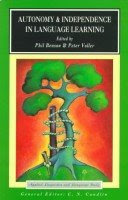A starting point
You won't have to read a 20 page article and comment on it every week any more, and I'm sure that you are already feeling relieved about that! On the other hand, one way of keeping your professional development going in the area of New Technologies in Language Teaching is to subscribe to a few blogs focused on educational technology. You can see a few of the blogs that I subscribe to in the 'blogroll' on the left. That way, as new resources, teaching tools and ways of exploiting these are described you can take advantage of them as they come out. You'll also be able to share your own ideas by commenting on other people's blogs or writing posts of your own. You can get an idea of how this might work for you if you read this post by Passionately Curious. The writer describes how a variety of social networking tools, including blogs, have helped them to create a 'personal learning network' for professional development.
A process
As far as blogging for professional development goes, I've found the following process to be helpful:
- Identify blogs and journals that I am interested in and subscribe using RSS
- Get into the habit of reading (more or less regularly)
- Post links to useful resources, blogs and write comments that relate the posts to my context


